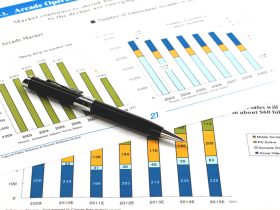Sen. Tim Scott, a South Carolina Republican seeking his party’s presidential nomination in 2024, is pushing for a focus on tax cuts, as he rolls out a new economic plan.
Scott is getting 9% support from Republican primary voters in polls in Iowa, the state that’s due to hold its first-in-the-nation caucuses on Jan. 15, according to a RealClearPolitics average of polls.
That puts him at third in Iowa, while he’s just in seventh place with only 2.4% support in RCP’s average of national polls.
But Scott indicated to MarketWatch in a brief interview that he thinks his economic plan could help him stand out in the crowded GOP field.
“One of the things it does for me is it really restores the focus on providing economic opportunity and stimulus to our economy based on Ronald Reagan and Art Laffer, the Laffer curve,” said Scott, referring to the economist who said lower taxes help generate economic activity, leading to more money to tax and higher tax revenue.
From Barron’s archives (2018): Art Laffer talks taxes
Scott’s plan — dubbed “Build. Don’t Borrow.” — calls for making permanent the personal and family tax cuts that came in 2017’s Republican tax overhaul. The 57-year-old politician emphasized that he was “one of the primary authors” of the Tax Cuts and Jobs Act, and he stressed that key provisions of the law are due to expire in 2025.
“We were able to produce $4,400 for the average family,” Scott told MarketWatch.
“So making those tax cuts permanent — could not do that because of the vehicle of reconciliation in 2017 — making them permanent would allow for people to keep more of the $2 trillion in tax cuts that we afforded folks.”
From MarketWatch’s archives (2021): A guide to budget reconciliation
Advisers to former President Donald Trump, the frontrunner in the 2024 GOP primary, have floated making deeper cuts to the overall corporate tax rate of 21%, saying they’d potentially go as low as a 15% rate.
Would Scott support that type of cut?
“I think you have to take a look at how you’d roll that out, and how you would get that done. I have not studied his plan. I’ve studied my plan,” Scott said.
“So at the end of the day, what I’m comfortable doing is taking a look at what I believe would stimulate our economy and what would create 10 million new jobs.”
The senator said his figure of 10 million new jobs comes from getting up to 4 million positions from his economic plan’s energy
XLE
policies, up to 4 million from his proposals for high-tech manufacturing in “opportunity zones” and another 2 million from his proposals for an innovation economy.
Other elements of Scott’s economic plan are cutting non-defense discretionary spending back to a pre-COVID-19 baseline, moving cabinet agency staff out of Washington, D.C., pursuing “Welfare Reform 2.0” and aiming to double nuclear power
NLR
in 10 years.
He’s expected to be among the GOP White House hopefuls who take part in their primary contest’s second debate on Sept. 27 at Reagan’s foundation and institute in Simi Valley, Calif.
Read the full article here











Leave a Reply